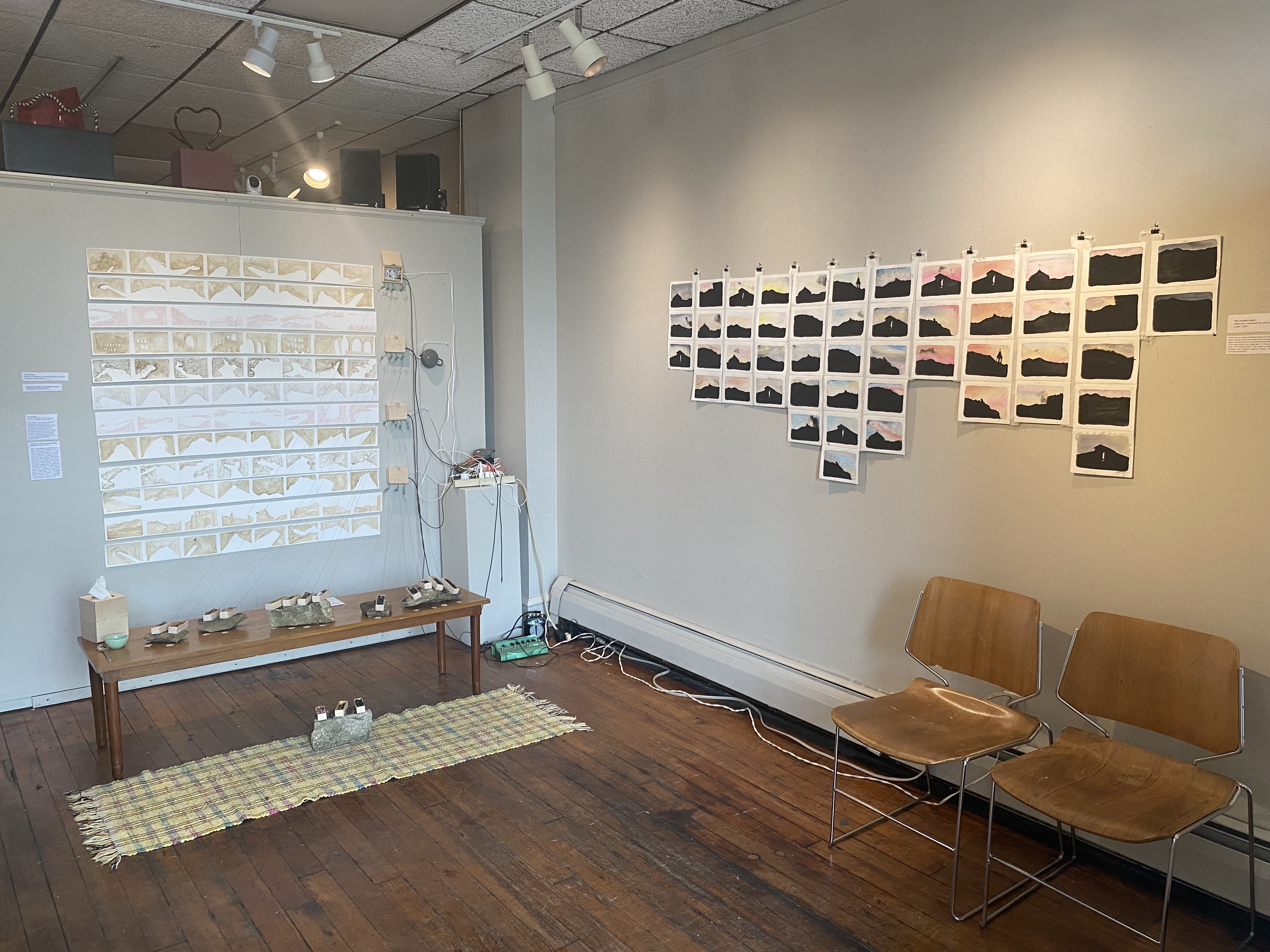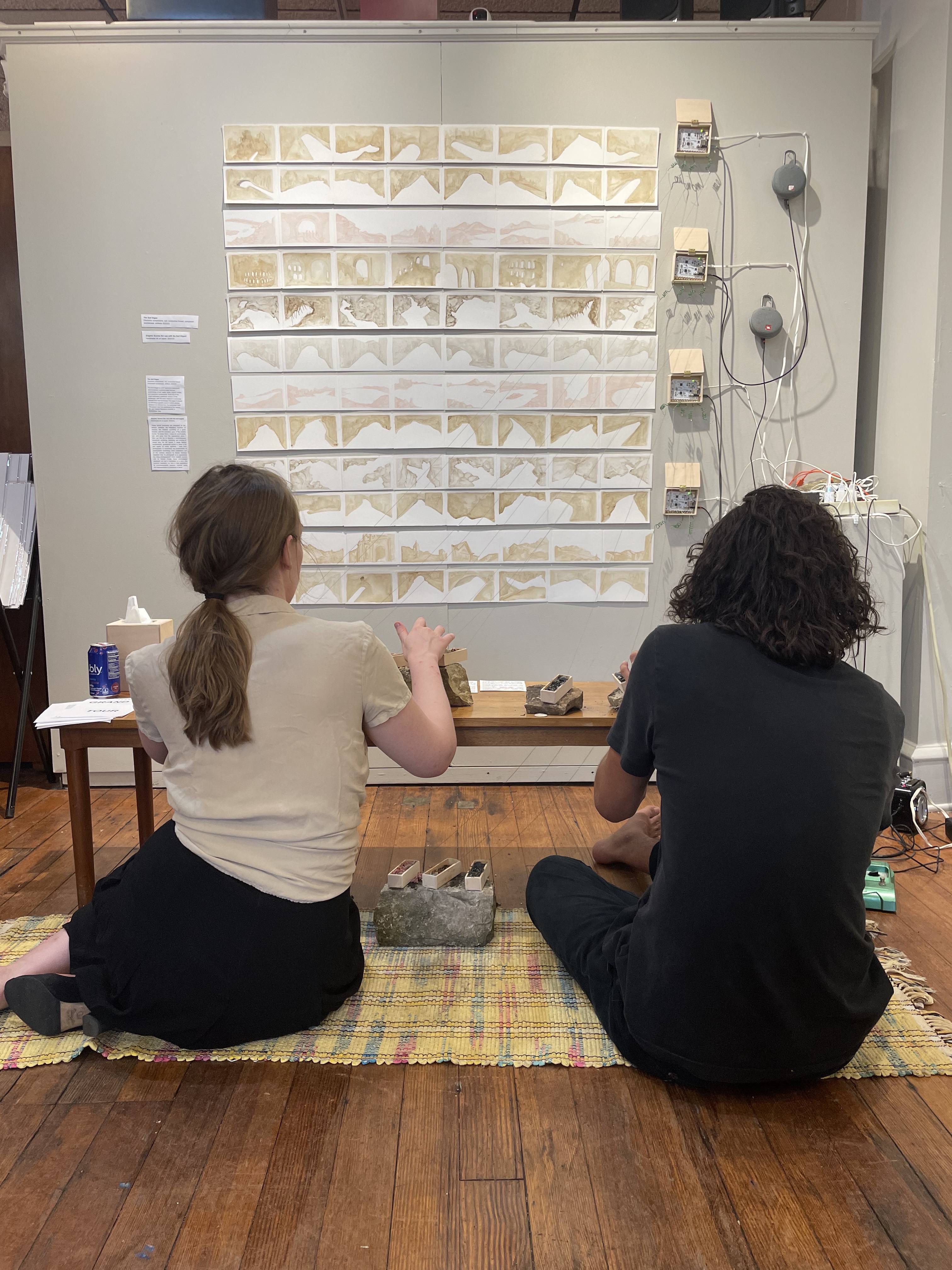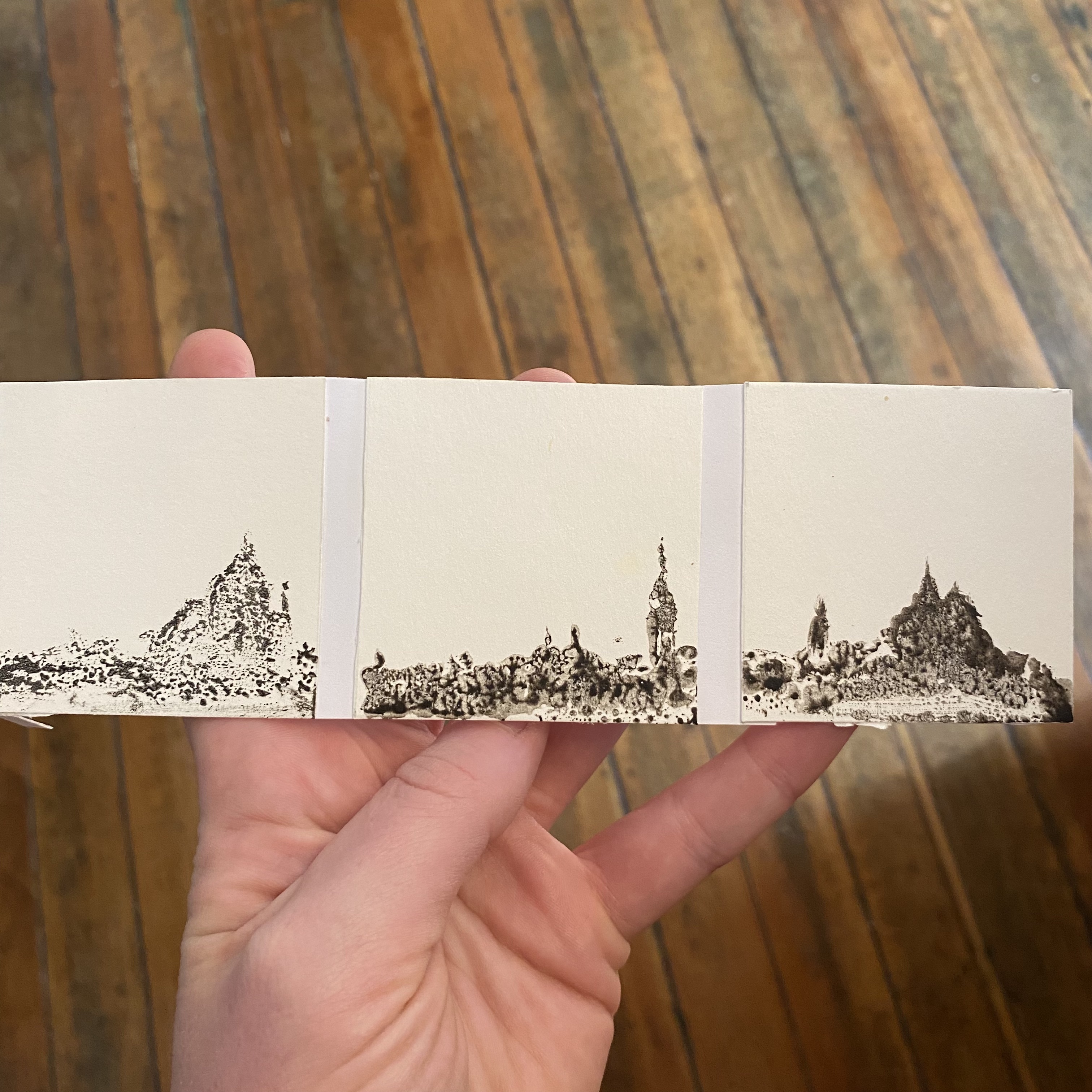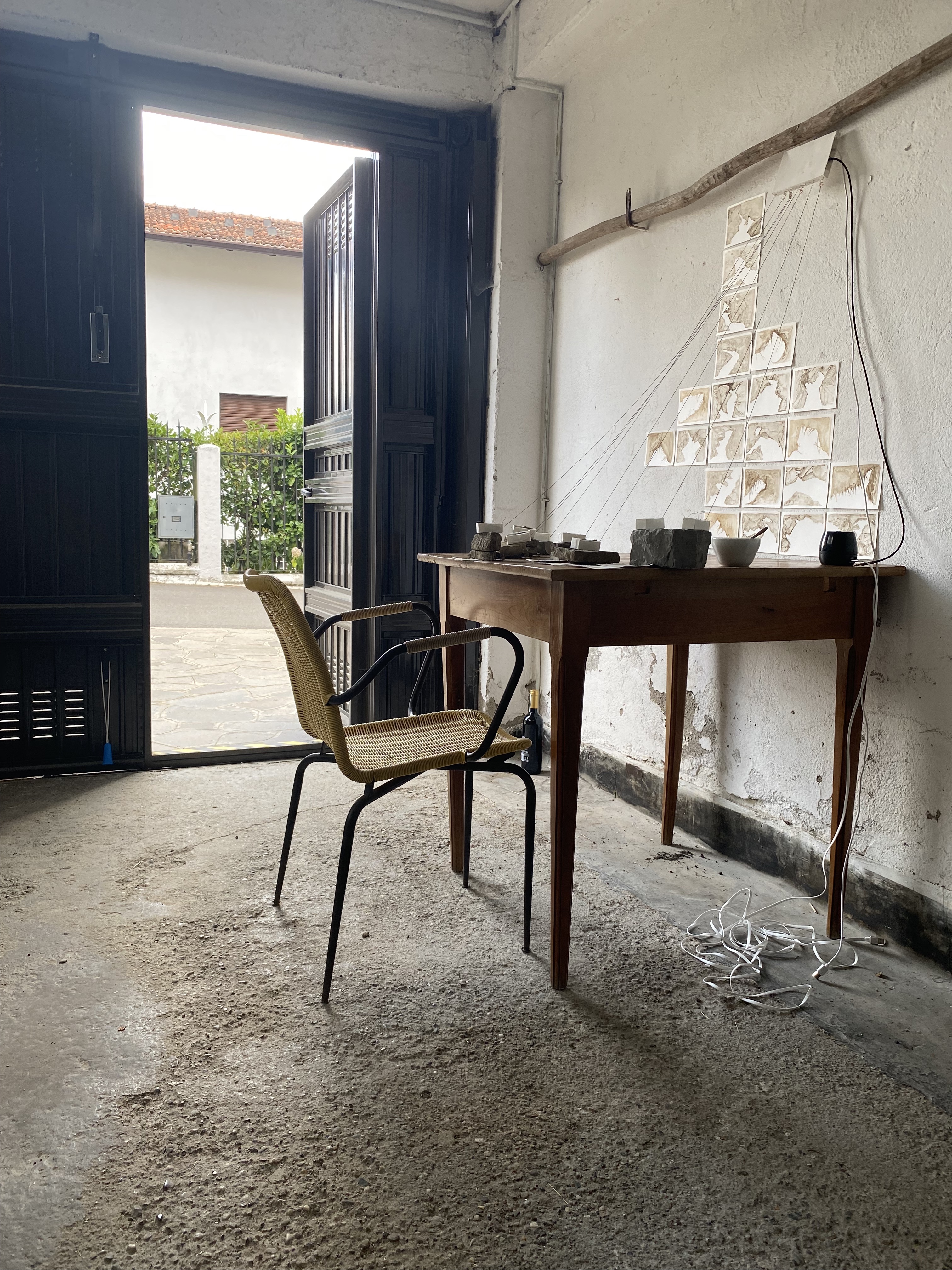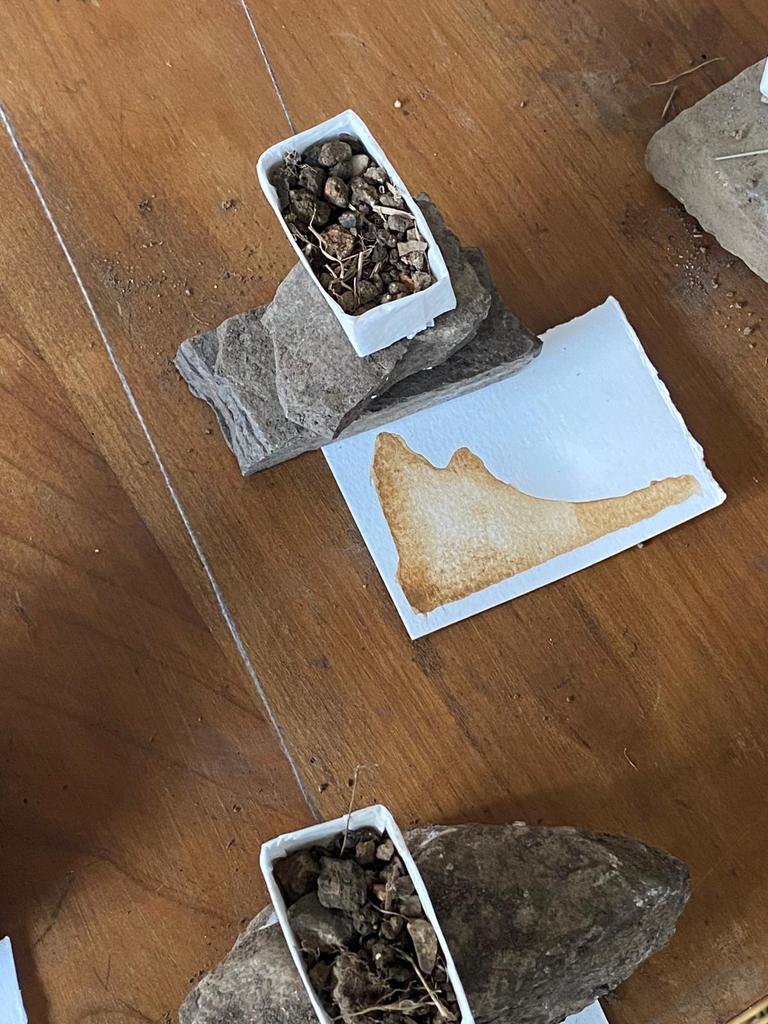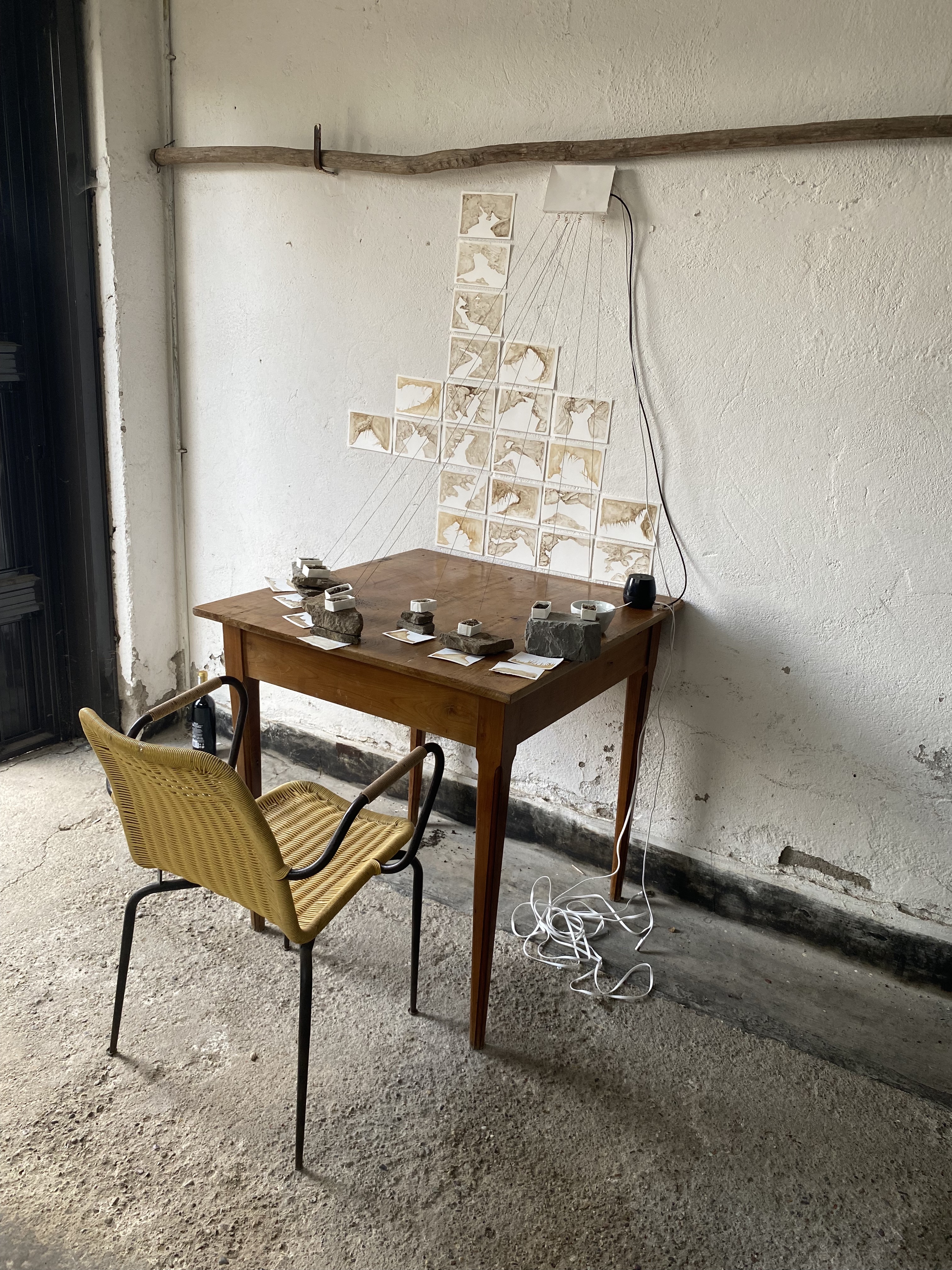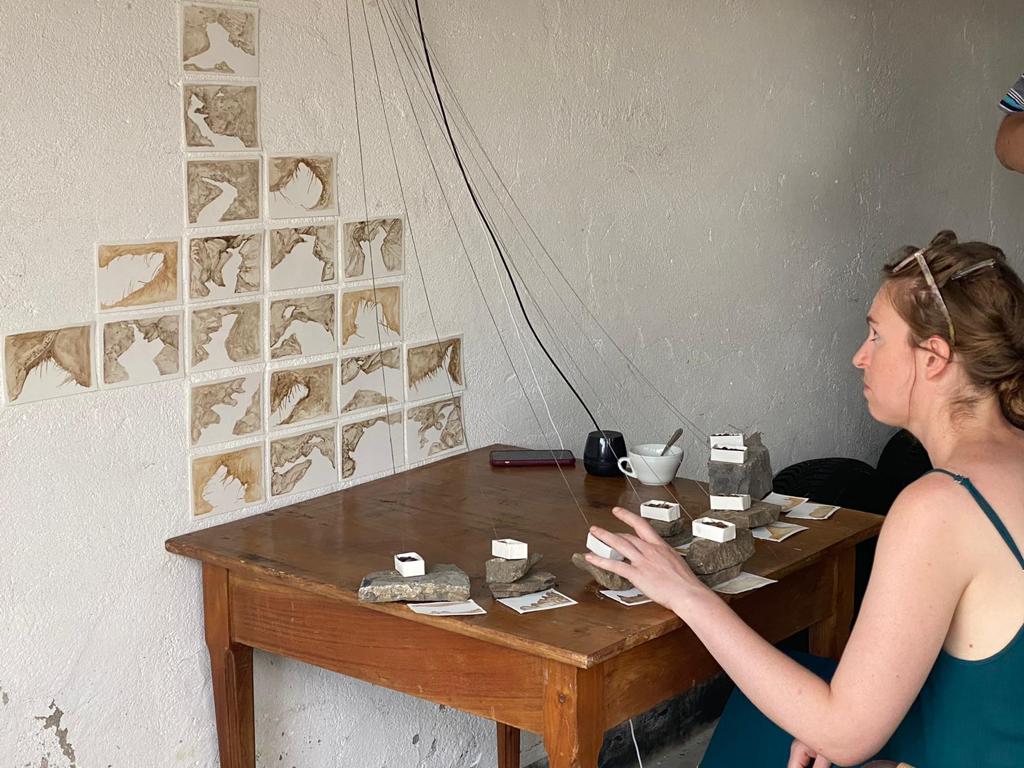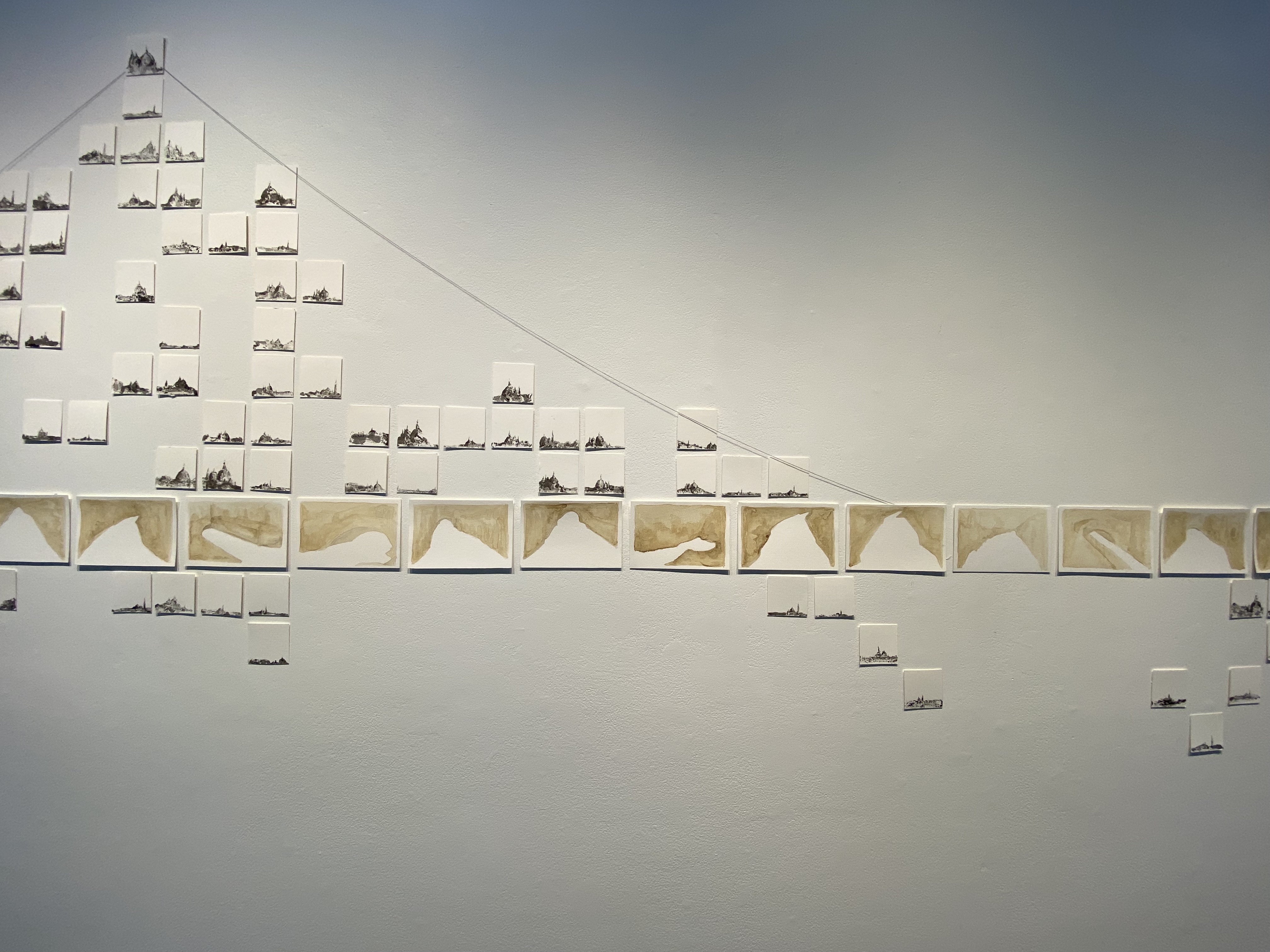GRAND TOUR
This is an iterative installation about:
- Tourism
- Coloniality
- Representation
- Performances of Modernity
- Land
Grand Tour uses handmade ink, sound, graphic notation, DIY electronic instruments, and the form of the postcard to consider the ways in which:
I have installed iterations of GRAND TOUR in Minneapolis at the University of Minnesota, and in the Taleggio Valley, at the Nature, Art, and Habitat Residency (NAHR). At the University of Minnesota, I arranged a Venetian psalm setting of Miserere Mei Deus, recorded myself playing each of the parts, and edited them into a single chorus. I paired this with a “Bird Chorus” singing the same arrangement. I created this chorus by assigning note values to individual bird songs recorded in the early spring at a bird feeder in New Richmond, WI and editing these songs together.
In the NAHR iteration, the work took the form of a “Soil Organ,” a DIY electronic instrument activated by any performer. The performer used conductive soil “keys” to perform a graphic score made of individual postcards of landscape features painted with ink made of soil and water from the landscape itself (the Taleggio Valley, the Enna River) against an accompaniment of a fixed soundscape composed of sounds from the Taleggio Valley. These sounds were foraged through subterranean recording. This iteration of Grand Tour was supported by a collaboration with the U.K.-based performer, composer, and librettist, Roxanne Korda.
In August of 2023, I showed an iteration of Grand Tour at Friedli Gallery in St. Paul, Minnesota. In this iteration, I expanded the project, using printmaking, drawing, installation, sound, and bookmaking to critique contemporary tourism and suggest a new way of interacting with place, apart from the extractive colonial logics that support the historical grand tour and contemporary tourism in the West.
This was explored in multiple ways. I created a series of drypoints which represented place as a single contour, considering how the multiple (the print) and the reduction of a complex site to a single line are symbolic of what John Urry has called “the tourist’s gaze.”2 In the installation, “The Soil Organ,” I produced a graphic score of these contours in the form of twelve lines of bound postcards (all rendered in ink made from plant material and water from the place they represented) and fabricated an electronic instrument (the titular Soil Organ) on which these contours could be played. Like a traditional organ, this instrument had several registers: the first three representing different places in Italy; the fourth, three “pedals” that activated a place-specific soundscape I composed and arranged. In “#Venezia,” a bound scroll of nearly 200 monoprints, I used the medium of the print to explore the relationship between tourism, reproducible media (the paradox of the monoprint), and digital media (the endless scroll of the instagram feed). Notably, I printed these monoprints with carbon black ink I made from oregano foraged at the 2022 Venice Biennale.
Photos 1-2: Installtion view at Friedli Gallery, St. Paul, MN;Photo 3: Installtion view “The Tourist’s Gaze”; Photo 4-5, #Venezia, Installation view and closeup; Photos 6-11: NAHR Exhibition Space, Sottochiesa, Italy; Photos 12-15, University of Minnesota.
Photo credits (left to right, top to bottom): Clare Harmon, Annalise Copenhaver, Clare Harmon, Lucinda Coleman, Lucinda Coleman, Lucinda Coleman, Clare Harmon, Lucinda Coleman, Clare Harmon, Clare Harmon, Clare Harmon, Clare Harmon.
︎︎︎ WATCH: Gallery Walkthrough, GRAND TOUR, St. Paul, MN
︎︎︎ WATCH: Performance of the Soil Organ, St. Paul, MN (Ansel Arnold, Collaborator)
︎︎︎ WATCH: University of Minnesota Installation
︎︎︎ LISTEN: NAHR Soundscape
-
The modern tourist attempts to “possess” a place through images and micro-extractions
-
Contemporary tourism in Italy is bound to Grand Tour practices
- The Grand Tour is representative of a modernity that was always unsustainable to itself
- Contemporary tourism is undergirded by the (il)logic of coloniality.
I have installed iterations of GRAND TOUR in Minneapolis at the University of Minnesota, and in the Taleggio Valley, at the Nature, Art, and Habitat Residency (NAHR). At the University of Minnesota, I arranged a Venetian psalm setting of Miserere Mei Deus, recorded myself playing each of the parts, and edited them into a single chorus. I paired this with a “Bird Chorus” singing the same arrangement. I created this chorus by assigning note values to individual bird songs recorded in the early spring at a bird feeder in New Richmond, WI and editing these songs together.
In the NAHR iteration, the work took the form of a “Soil Organ,” a DIY electronic instrument activated by any performer. The performer used conductive soil “keys” to perform a graphic score made of individual postcards of landscape features painted with ink made of soil and water from the landscape itself (the Taleggio Valley, the Enna River) against an accompaniment of a fixed soundscape composed of sounds from the Taleggio Valley. These sounds were foraged through subterranean recording. This iteration of Grand Tour was supported by a collaboration with the U.K.-based performer, composer, and librettist, Roxanne Korda.
In August of 2023, I showed an iteration of Grand Tour at Friedli Gallery in St. Paul, Minnesota. In this iteration, I expanded the project, using printmaking, drawing, installation, sound, and bookmaking to critique contemporary tourism and suggest a new way of interacting with place, apart from the extractive colonial logics that support the historical grand tour and contemporary tourism in the West.
This was explored in multiple ways. I created a series of drypoints which represented place as a single contour, considering how the multiple (the print) and the reduction of a complex site to a single line are symbolic of what John Urry has called “the tourist’s gaze.”2 In the installation, “The Soil Organ,” I produced a graphic score of these contours in the form of twelve lines of bound postcards (all rendered in ink made from plant material and water from the place they represented) and fabricated an electronic instrument (the titular Soil Organ) on which these contours could be played. Like a traditional organ, this instrument had several registers: the first three representing different places in Italy; the fourth, three “pedals” that activated a place-specific soundscape I composed and arranged. In “#Venezia,” a bound scroll of nearly 200 monoprints, I used the medium of the print to explore the relationship between tourism, reproducible media (the paradox of the monoprint), and digital media (the endless scroll of the instagram feed). Notably, I printed these monoprints with carbon black ink I made from oregano foraged at the 2022 Venice Biennale.
Photos 1-2: Installtion view at Friedli Gallery, St. Paul, MN;Photo 3: Installtion view “The Tourist’s Gaze”; Photo 4-5, #Venezia, Installation view and closeup; Photos 6-11: NAHR Exhibition Space, Sottochiesa, Italy; Photos 12-15, University of Minnesota.
Photo credits (left to right, top to bottom): Clare Harmon, Annalise Copenhaver, Clare Harmon, Lucinda Coleman, Lucinda Coleman, Lucinda Coleman, Clare Harmon, Lucinda Coleman, Clare Harmon, Clare Harmon, Clare Harmon, Clare Harmon.
︎︎︎ WATCH: Gallery Walkthrough, GRAND TOUR, St. Paul, MN
︎︎︎ WATCH: Performance of the Soil Organ, St. Paul, MN (Ansel Arnold, Collaborator)
︎︎︎ WATCH: University of Minnesota Installation
︎︎︎ LISTEN: NAHR Soundscape
